Definition of Chemical Heat Treatment
Chemical heat treatment is a process that involves heating metal or alloy parts in an active medium suitable for insulation, causing one or more elements to penetrate the surface layer and change its chemical composition, structure and performance.
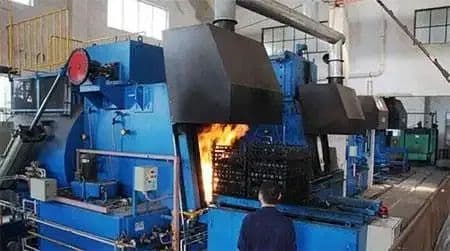
Chemical heat treatment, also known as “surface diffusion” or “thermal diffusion” treatment, involves placing metal materials or parts in a solid, liquid or gaseous medium containing one or more chemical elements.
The materials are then heated to a specific temperature in a furnace, allowing these elements to enter the metal surface through decomposition, adsorption, solid solution, and combined reaction of pyrolyzed medium on the metal surface. The elements gradually penetrate the metallic material through thermal diffusion, forming a penetration layer rich in one or more alloying elements on the metallic surface.
Chemical heat treatment technology plays a significant role in modern industry due to its ability to significantly improve the performance requirements of workpieces.
By creating a hard surface and a tough inner surface, it can improve various mechanical properties, including high strength, high hardness, high wear resistance, anti-seizing performance, anti-fatigue performance and special corrosion resistance. It can also improve the physical and chemical properties of the part surface, such as oxidation resistance at high temperatures.
It is important to note that the part must maintain its original plastic and ductile properties to increase the durability of machine parts under complex working conditions. As a result, chemical heat treatment is widely used to achieve specific requirements for a wide range of industrial applications.
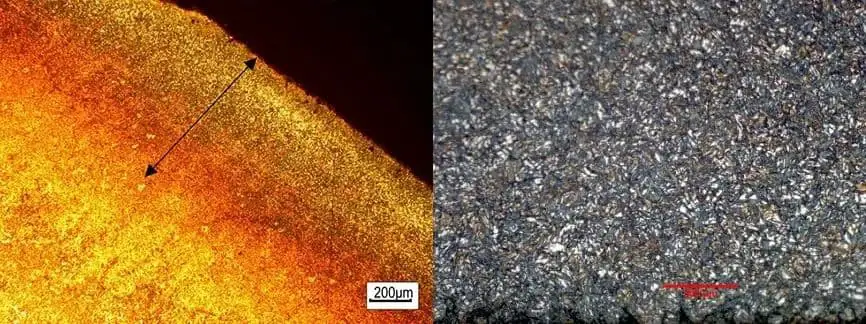
The main features of chemical heat treatment include:
- Infiltration by solid diffusion that not only changes the chemical composition of the surface layer of the part, but also modifies its structure.
- The presence of a diffusion layer between the infiltration layer and the matrix, which can provide properties that are difficult to achieve with a single material or further improve part performance.
- Chemical heat treatment is driven by a concentration gradient.
- The structure of the infiltration layer formed by chemical heat treatment follows the phase diagram.
- Its structure is continuous and classified as a metallurgical combination.
Classification of chemical heat treatment
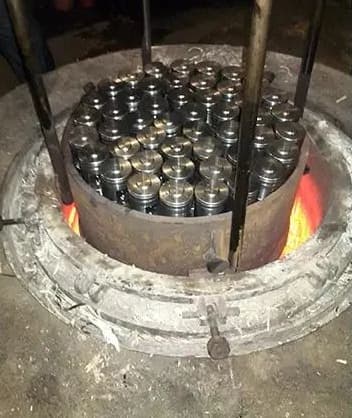
1. Classification according to the type of infiltrated elements
This can be divided into several methods, including carburizing, nitriding, boronizing, aluminizing, sulfurizing, carbonitriding, carbon-chromium composite carburizing and more.
2. Classification according to the type and order of infiltrated elements
1. Single element infiltration
Such as carburizing (unit carburizing), boronizing (unit boronizing), etc.
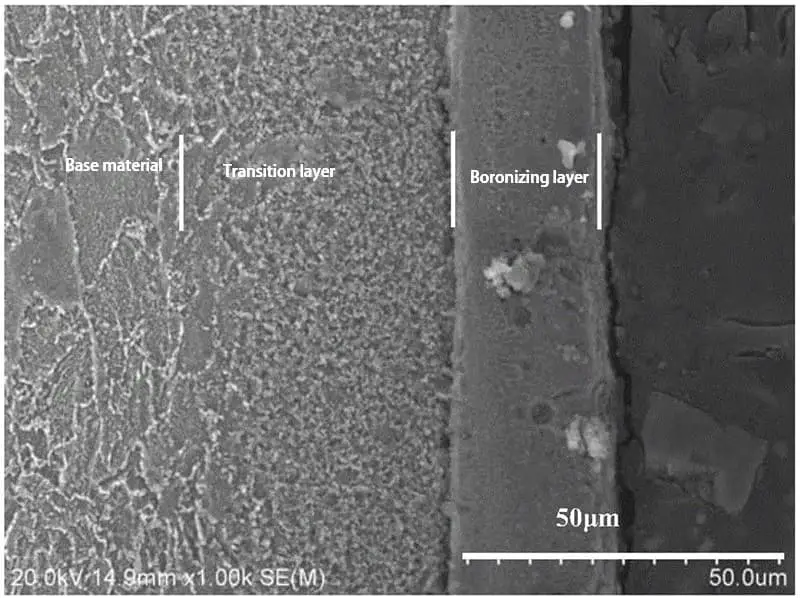
2. Binary penetration.
The process of simultaneous infiltration of two elements is known as double penetration.
When carbon and nitrogen are infiltrated simultaneously, it is called carbonitriding (also known as carbonitriding). Similarly, the process of simultaneous infiltration of boron and aluminum is called boron aluminization (also known as boron aluminization).
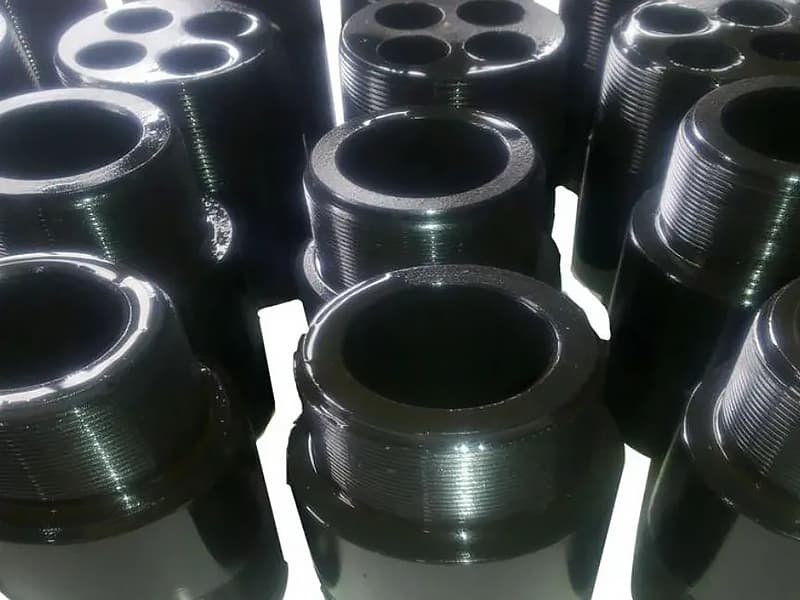
3. Penetration of multiple elements.
Multi-element penetration refers to the simultaneous infiltration of more than two elements.
Specifically, when carbon, nitrogen, and boron infiltrate a material at the same time, it is called carbonitriding.
4. Binary compound infiltration.
The infiltration of a material with two elements is called two-element composite infiltration.
For example, if tungsten and carbon are infiltrated sequentially, the process is known as tungsten-carbon binary composite infiltration.
5. Multi-element composite infiltration.
Multi-element composite infiltration involves the sequential infiltration of more than two elements.
For example, ternary composite infiltration of nitrogen, carbon and sulfur is a type of multi-element composite infiltration.
3. Classification according to the state of the penetrating elements of the active medium
1. Solid method
Including powder filling method, paste (paste) method, electric cyclone method, etc.
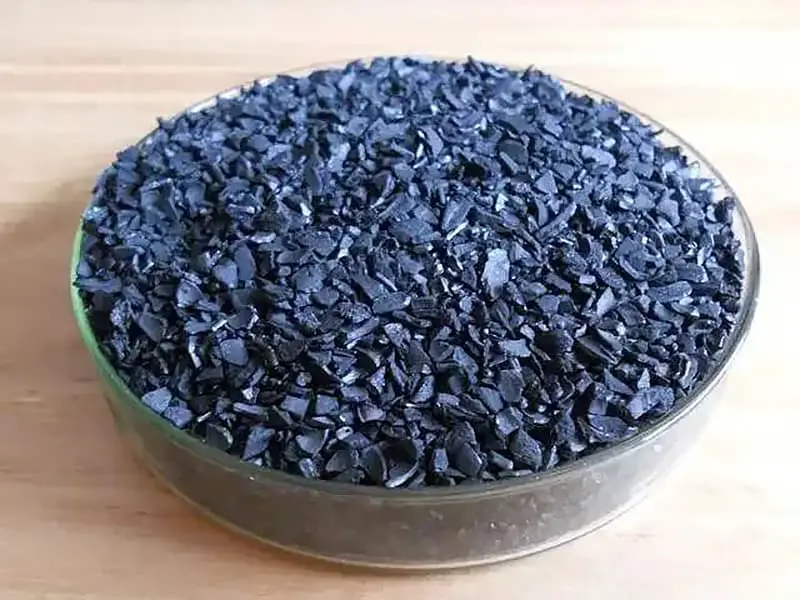
2. Liquid method
Including salt bath method, electrolytic salt bath method, aqueous solution electrolysis method, etc.
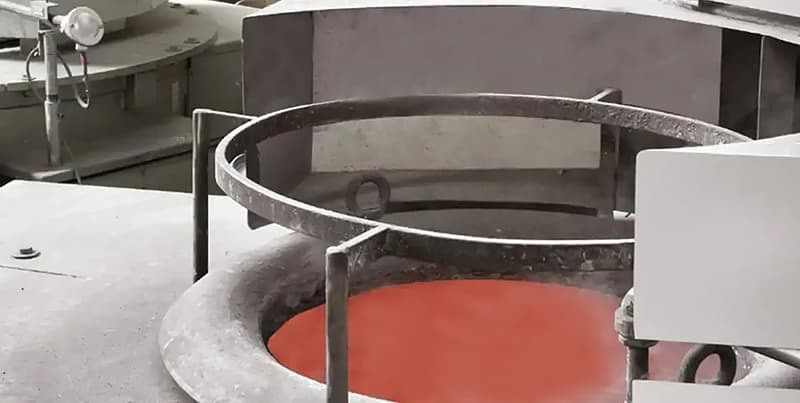
3. Gas method
Including vacuum method, solid gas method, indirect gas method, mobile ion furnace method, etc.
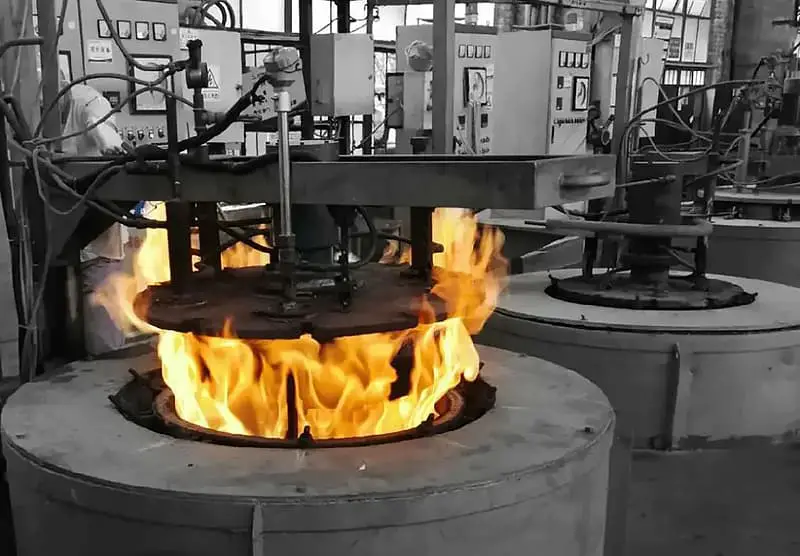
4. Ion bombardment method
It includes ion bombardment carburizing, ion bombardment nitriding, ion bombardment metallizing, etc.
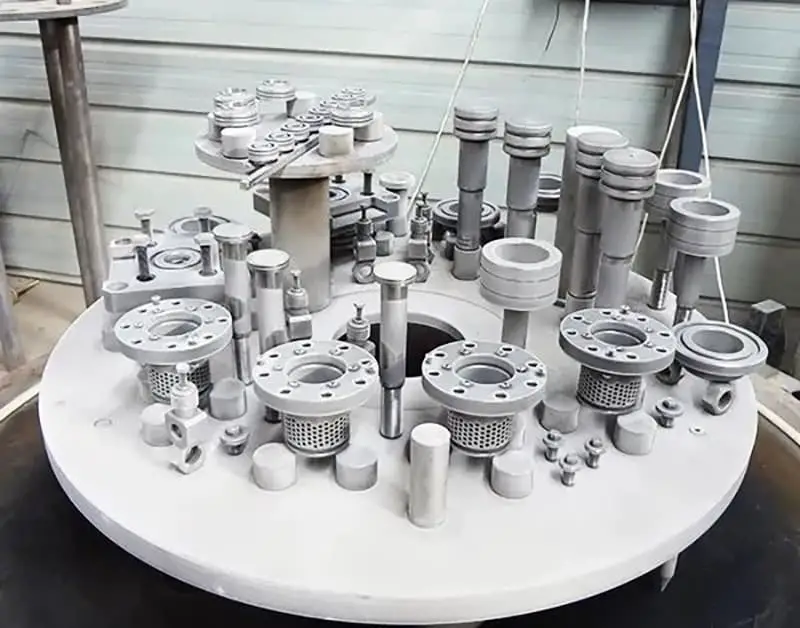
4. Classification according to the characteristics of changing the chemical composition of the surface
Diffusion infiltration can be classified into four categories:
- Infiltration of various non-metallic elements.
- Infiltration of various metallic elements.
- Simultaneous infiltration of metallic and non-metallic elements.
- Diffusion to eliminate impurity elements, among others.
5. Classification according to the phase structure formed by the infiltrating elements and the steel elements
There are two mechanisms involved in the steel surface modification process. The first mechanism is the formation of solid solutions by the infiltrating elements that dissolve in the network of solvent elements. Carburizing, carbonitriding and similar processes fall into this category.
The second mechanism is the diffusion reaction, which has two subtypes.
The first subtype involves the infiltrating elements reacting with the elements present in the steel to form ordered phases, also known as metallic compounds. Nitriding, commonly called nitriding, is an example of this subtype.
The second subtype occurs when the solubility of the infiltrating elements in the solvent element network is very low. In this case, the infiltrating elements react with the elements present in the steel to form composite phases. Boronization is an example of this subtype.
6. Classify according to the effect/purpose of infiltration elements on the surface properties of steel parts
- Increase the hardness, strength, fatigue resistance and wear resistance of the part surface by employing techniques such as carburizing, nitriding, carbonitriding and others.
- Increase the hardness and wear resistance of the part surface through methods such as boronization, vanadization, niobium and others.
- Reduce the coefficient of friction and improve the anti-seize and scratch resistance of the part surface using techniques such as sulfurization, oxynitriding and sulfur-nitrogen penetration treatment.
- Improve the corrosion resistance of the part's surface using techniques such as siliconization, chrome plating, nitriding and others.
- Increase the high-temperature oxidation resistance of the part surface through methods such as aluminization, chrome plating, siliconization and others.
7. Classification according to the state of the steel structure during chemical heat treatment
Table 1 Classification table formed according to the structural state of the steel
| Chemical heat treatment in the austenitic state | Chemical heat treatment in ferrite state |
| Carburization | Nitriding |
| Carbonitridation | Nitrocarbonization |
| Boronization, boroaluminization, borosiliconization, borozirconization, boron carbon composite carburizing, boron carbon ammonia composite carburizing, etc. | Oxynitriding, Oxynitrocarburizing |
| Chromizing, aluminizing chromizing, siliconizing chromizing, nitriding chromizing, titanizing chromizing | Sulfurization |
| Aluminization, aluminum-nickel penetration, aluminum rare earth penetration, etc. | Oxynitriding, Oxynitrocarburizing |
| Siliconization | Zinc plating |
| Vanadium, niobium, titanium, etc. |
Table 1 shows that the chemical heat treatment temperature of steel in the ferrite state is generally lower than 600 ℃, which is referred to as low-temperature chemical heat treatment.
On the other hand, the chemical heat treatment temperature of steel in the austenitic state is normally higher than 600 ℃, which is known as high-temperature chemical heat treatment.
Low-temperature chemical heat treatment processes offer several advantages, including lower treatment temperature, energy efficiency, minimal workpiece distortion, improved corrosion resistance and anti-seizing properties, increased hardness, and improved anti-wear and anti-wear performance. friction.
Furthermore, as can be seen from Table 1, chemical heat treatment of steel is usually named after the infiltration of different elements, such as carburizing, nitriding, carbonitriding and so on.
Features of chemical heat treatment
Compared with surface hardening methods such as surface quenching and surface deformation strengthening, it has the following characteristics.
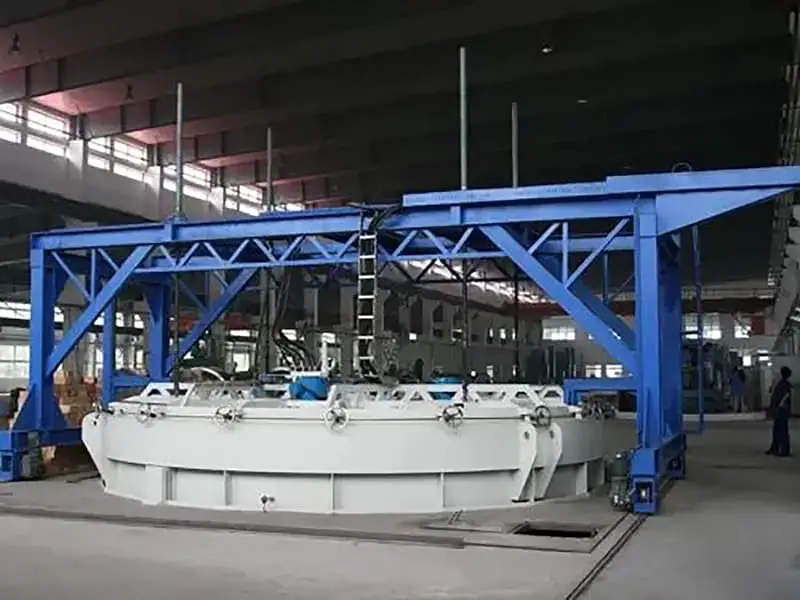
- By introducing different elements, the chemical composition and surface structure of the part can be effectively modified to achieve various surface properties, thereby meeting the performance requirements of the part under different operating conditions.
- The depth of the carburizing layer in typical chemical heat treatment can be adjusted based on the technical specifications of the part, and the composition, structure and performance of the carburizing layer gradually vary from the surface to the interior. The carburizing layer and the matrix are metallurgically bonded, resulting in a strong bond and preventing peeling of the surface layer.
- Chemical heat treatment is generally not restricted by the geometric shape of the part. Regardless of the shape, the shell and inner cavity can obtain the required penetration layer or local penetration layer. In contrast, surface hardening, rolling, cold pressing, cold rolling and other cold work hardening treatments are limited by the shape of the workpiece.
- The vast majority of chemical heat treatments have small part deformation, high precision, good dimensional stability and other advantages. Processes such as nitriding, soft nitriding, ionic nitriding and others allow the part to maintain high precision, low surface roughness and good dimensional stability.
- Chemical heat treatment can comprehensively improve the surface properties of the workpiece. Most chemical heat treatments can increase the corrosion resistance, oxidation resistance, friction reduction, anti-seizing, corrosion resistance and other properties of the surface layer of the part, while improving the mechanical properties of the surface.
- General chemical heat treatment has a more significant effect on improving the quality of mechanical products, releasing the potential of materials and prolonging the service life. Therefore, it can conserve precious metal materials, reduce expenses and increase economic benefits.
- Most chemical heat treatment is a complex physical, chemical and metallurgical process. It must be heated in a specific active medium through physical and chemical reactions at the interface and metallurgical diffusion from the outside to the inside. As a result, the process is complicated, the treatment cycle is time-consuming and the equipment requirements are high.
Conclusion
This article mainly focuses on defining, classifying and highlighting the characteristics of chemical heat treatment.
By providing this fundamental information, it is hoped that readers will gain a deeper understanding of the subject.

























































